John Dillingham’s Journey to the 220th Aviation Company
From a Warrior to a Catkiller—from Saigon to Hue and Phu Bai,
Compiled by Gene Wilson, Catkiller Historian
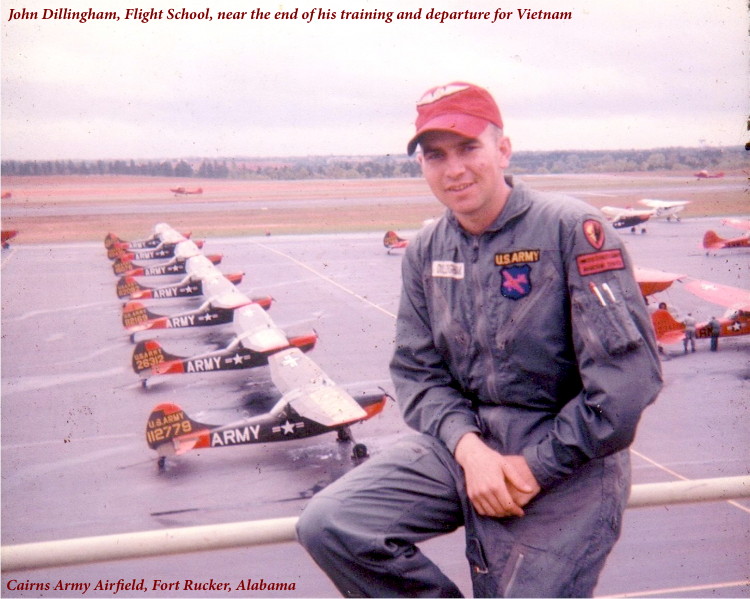
Compiler’s Note: This story provides somewhat of a “bridge” story for the “existence” of L-19/O–1 Birddogs in I Corps between the stand down and inactivation of the 73rd Aviation Company, the activation of the I Corps Aviation Company and the assignment of the 220th Aviation Company to the five northern Provinces in South Vietnam in support of the MACV Advisory Groups, Special Forces units and the newly arrived III Marine Amphibious Force in I Corps.
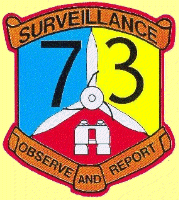
When John completed WOFWAC 64-2 with orders to the 73rd Aviation Company (Airplane Surveillance) (Light), he was totally unaware that the 73rd had been stood down on 30 September 1964 and actually inactivated on 1 November 1964. He departed from San Francisco o/a 14 November and after an 18 hour layover in Hawaii, he arrived in Saigon on 18 November 1964.
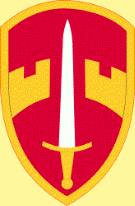
He was a guest at the MACV Repo Depot for 3 days where on the first day he and others were briefed by GEN Westmoreland and also got a tour of Saigon. John notes that he was moved within the “hotel” each day, not to a room, but to a cot in a hallway which could be in a different hallway on a different floor each day. However, some of the guys who were awaiting their assignments for up to two weeks knew the best restaurants in the area, so his time there was “bearable.” He was then directed to get aboard a C–130 to Pleiku to meet his unit. There he met MAJ Wallace Baker, the CO of the 172nd Aviation Company (AML), a helicopter company which appeared to be part of the 14th Aviation Battalion (AML), then in Nha Trang, which further appeared to have had command or operational control of all Army assets, both fixed and rotary wing, in the I and II Corps of the northern half of the Republic of South Vietnam. About 1 December John was sent to Da Nang with the Platoon Headquarters of a Birddog platoon based at Da Nang—Main.
To revisit the 73rd Aviation Company which had been in Vietnam since March 1963 and had stationed its 32 aircraft and crews throughout the country in support of the MACV Advisory Groups with ARVN units and the US Special Forces units, we have learned that I Corps had Army L-19/O-1 Birddogs in Da Nang, Hue and Quang Ngai. MAJ John S. Kark, CO of the 73rd, published a booklet on the history of the 73rd Aviation Company (Airplane Surveillance) (Light) between May 1963 and May 1964. During that time the 73rd had its 1st Aerial Surveillance Platoon headquartered at Da Nang—Main with its 1st Aerial Surveillance Section at Hue/Citadel (2 aircraft) and its 2nd Aerial Surveillance Section at Da Nang (4 aircraft). The 2nd Aerial Surveillance Section (3 aircraft) of the 2nd Aerial Surveillance Platoon (headquartered in Kontum) was stationed in Quang Ngai.

After about five weeks in Da Nang, John was sent to Hue to replace WO Bobby Newman on his DEROS in early January 1965. At that time 1LT Earl Foster was the Section Commander at Hue. John soon learned that the two pilots and aircraft in Hue flew just about as many missions as the four aircraft did in Da Nang–often exceeding 100 hours per month. But life was good! In Hue there was a swimming pool and there was water skiing on the Perfume River.

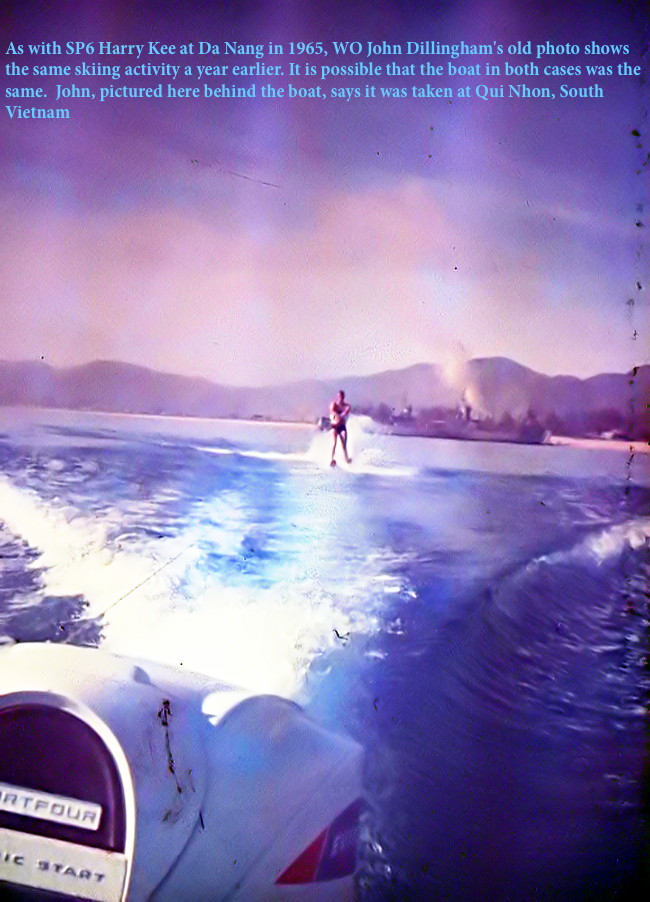
In those early days MAJ Baker had also worked out a deal with the commander of a C-123 unit at Da Nang that rotated weekly to an airfield outside Bangkok for a 5-day R&R in addition to a one week R&R in Hong Kong. Local travel orders were destroyed once the “travelers” returned safely to Da Nang. If one behaved himself, it was also possible to sometimes get an additional “short” R&R to Bangkok. However, all of that went “out the window” with the arrival of the 220th.


In the meantime on 1 November 1964 the I Corps Aviation Company was formed in Da Nang, collecting all “loose” units in I Corps under the command of the 14th Aviation Battalion. It is not known exactly how and when the Birddog assets “left” the 172nd Aviation Company in Pleiku and became part of the I Corps Aviation Company in Da Nang, but we are still trying to sort that out. All of the Birddog aircraft, at least in I Corps, answered the call for missions as “Backspin”, the former call sign of the 73rd Aviation Company, with the last three of the aircraft tail number - at Hue, “Backspin” 792 or 903 provided just about everything for fixed wing aerial surveillance north of Hai Van Pass to the DMZ and the border of Laos.

As Army Aviation was growing in strength in Vietnam, the 74th Aviation Company (Surveillance Airplane Light) was formed up in March 1965, actually to replace the 73rd in its former area of operations in III Corps. During the same time the 219th, 220th and 221st Aviation Companies (SAL) were being organized at Fort Hood, Fort Lewis and Fort Bragg, respectively, for deployment to provide greater O-1 support to each of the Corps areas in Vietnam. In April 1LT James Harris was assigned to the section in Hue to replace 1LT Foster upon his DEROS. Then in June 1965 MAJ Curry and his advance party learned that the 220th was assigned to support the III Marine Amphibious Force, which had just arrived in-country, and also the MACV Advisory Teams and the US Special Forces in I Corps.

I learned from a telephone call with Jerry Curry recently that while he and his advance party were in Saigon, he had been verbally “instructed” to pick up the Birddog assets of the I Corps Aviation Company as part of the 220th. In early July as the 220th settled in with its headquarters in Phu Bai, MAJ Curry then showed up in Hue and informed John and Jim Harris that he was their new “boss”. John relates that the first that anybody in Hue knew of the 220th, except for rumors with no definite information—at least down at the pilot level—was during “siesta time” when MAJ Curry walked into their quarters and introduced himself as their new CO. Most of the time they were too busy to worry about such things as they were flying in excess of 100 hours each month. However, even with the known flight safety restrictions on flight time, extension after extension was granted to continue to fly. In the 1965 Catkiller History Index, Bill Everett notes that he just “absorbed” the two pilots and Birddogs that were at Quang Ngai into the 1st Platoon. A recent phone conversation with Bob Chancellor, then 3rd Platoon Commander, recalls the Birddog section that was then at Da Nang. It should also be noted that once the 220th became operational, the “Backspin” call sign was quickly replaced by “Catkiller”. It took a brief time for the supported units to let go of calling for “Backspin”, but the “Catkillers” soon became quickly accepted and very well known as the new unit in I Corps.

Just as a matter of interest of what else was going on in the I Corps area from the history of the 282nd Assault Helicopter Company - during this same time period the 282nd arrived in increments—with the advance party in May, other elements in June, more in July and they were “collected” together by the 14th Aviation Battalion, then at An Son (at Lane Army Heliport near Qui Nhon), and finally made its final home in Da Nang. The new company’s mission was to provide helicopter support to the I and II Corps Advisory Groups. The 282nd absorbed the rotary wing assets of the I Corps Aviation Company (Prov), former elements of the 172nd Aviation Company with its 1st Platoon, which was also headquartered in Da Nang at the Marble Mountain Air Facility, and then the unit had aircraft stationed in Da Nang, Hue/Citadel and Quang Ngai. In addition to the 220th’s “Catkillers” I Corps then had the 282nd’s “Black Cats” and “Alley Cats” —but they soon got along very well together.
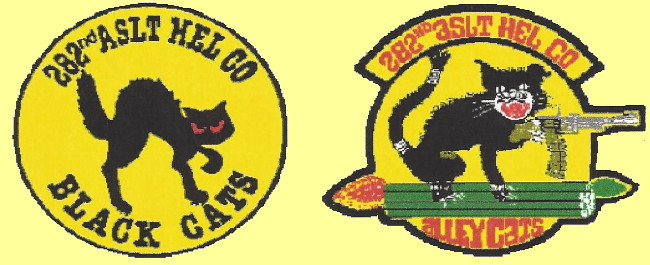
Compiler’s Note: John has copies of action(s) with the I Corps Aviation Company, 14th Aviation Battalion—submissions for acknowledgement and orders for Air Medals. John has been searching to locate copies of any orders assigning him to and releasing him from the 172nd Aviation Company (AML), 14th Aviation Battalion (AML), assigning him to the I Corps Aviation Company, then the 220th Aviation Company and the 14th Aviation Battalion.
From July until October 1965, John “worked” as a member of the 2nd Platoon of the 220th Catkillers at Hue. He particularly remembers the key “new guys”, CPT David “Dave” Rogers, the 2nd Platoon Commander, CPT Charles “Woody” Woodhurst, CPT William “Bill” Amberger and 1LT Melvin “Mel” Davis. He served for a while as the platoon operations officer because of his familiarity with the area of operations until the new pilots settled in. Then about 5-6 weeks prior to his DEROS, he was pulled to Phu Bai “under the wing” of MAJ Curry in a non-operational flying status (he has no idea why), but he became a “tag-along” with the Company Commander and also worked for and with CPTs Schmale, Quigley and Weight in their positions as the Company XO, Operations Officer and Aircraft Maintenance and Supply Officer, respectively—a real learning experience that served him well in later years. He has related some good stories about the Supply Officer (then CPT “J” Weight) modus operandi and some secrets to the much better than “normal” mess operations at Phu Bai. There is also a good story about how MAJ Curry had to get involved in getting John’s DEROS orders out of Saigon to get him home. I am hoping that he can tell a few of these stories in his own words.
John completed his tour in November 1965 and went “home” to Ft. Bragg, NC. He completed rotary wing transition, became an IP and then became an air/ground gunnery IP, teaching pilots how to fly under combat conditions—not the basic “school solution” 80 knot traffic pattern take–offs and landings— that led to a 70–80% reduction in reported losses from the first unit that was trained by his unit. He flew all over the US to pick up helicopters to form new units and also flew Birddogs to the Cessna factory in Wichita, KS, for rebuild before being shipped to Vietnam.
Other memories and the “rest of the story” of John’s exploits while in I Corps and later years of his life may be added as a supplement to this historical chronology of Birddogs in the northern reaches of South Vietnam between 1963 and 1965.
Snippets From The Past:
As I was reading through some of the early history of the 220th, the TO&E came up: Major Curry told me that he was allowed to write the TO&E for the company, as well as hand pick the staff. The 220th was unusual in that it had up to (if memory serves me right on the number) 5th echelon maintenance. This subject came up one day while having a prop replaced on a bird at Phu Bai. Major Curry had had them fly in mechanics to change the prop, and someone in battalion maintenance knew that the 220th had that capability and had made a comment to Major Curry. His reply was that, “We only do the important maintenance at Phu Bai.” The interesting thing is that I was flying the Birddog when the prop lost a bearing and went to vibrating severely, and I was test flying the new prop when it also failed. Fresh out of the box and no good. Eventually, received a good prop and put the aircraft back in service.
The 220th arrived in country with every conex container lined with either plywood or 2 x 4’s: This enabled the company to rapidly hardback the tents, put dividers between each of the bunks in the Officers quarters, build a permanent latrine and shower facility, including a barbershop. It was amazing to me to see all of the improvements made to the company area in a short period of time, and all of the grousing stopped to be replaced with extreme pride in the look of the company area. At that time, there was only an EM club, in addition to the mess hall, which for most purposes was off limits to Officers. Pilots were allowed to slip in the back door of the mess and catch a meal of leftovers if they had been flying during the time the run was made to the RRU unit. Officers mess was offsite about 5 clicks at a radio research unit.
An aside on the early situation at Phu Bai: The relationship between the Commanding Officer of the Marines and MAJ Curry was on occassion less than amicable, at least early on. MAJ Curry had offered to send men and extra materials over to construct a shower area for the Marines and to help hardback some of their tents. He was informed that the Marines would not be there that long, as they were going to win the conflict and depart within 90 days. At the time the marines were showering under a “buffalo” setup above a shallow pit. They emerged just as dirty after the shower as they were before showering.
The first 120 days: The marines literally lived in the mud, with tents set up on the ground and no ground cover. MAJ Curry had two clerks that had the primary task of writing articles for the Stars and Stripes, countering in many cases stories about marines saving CatKillers. If these two could be located, they should have some great stories to tell. Just prior to my leaving country, the Marine CO called in the Seabees and had them hardback tents and build proper latrine and shower facilities. Also at that time the Marines at Phu Bai had not been deemed ready for Operations. When this group of marines came into Phu Bai, they refused to come up the Perfume River without a gunship escort. Colonel Bisset, the I Corp Senior Advisor, called me and asked if I had a weapon. I told him that I did and his instructions were to fly out over the bay, stick the rifle out the window of the aircraft and lead the LSTs up the river. I flew more than 8 hours that day at about 50 feet, circling the LSTs as they came and went delivering marines. My rifle was an M1–A2 that I had traded 2 blank tapes and 2 empty reels (7” tape reels) to a SF Sergeant at Khe Sahn. This was all a few weeks before the arrival of the 220th. We all tried real hard to ignore the arrival of this unit of marines, but sometimes when out on the town the locals would try to charge us 100 piastre for a beer, when the real price was 30 piastre. The marines did not know what the conversion rate was or care how much they spent on a beer, as their time in town was very limited. The magic words were, “GI, no Marine.” Prices immediately went back to normal.
Further comments on the possibility of 37mm: At one time we sighted numerous small black bursts to the NW of the Citadel. Finally, Earl Foster made the decision to fly out and check on the mysterious puffs. Turns out that it was extremely violent small pockets of turbulence, instead of the 37mm, which was something that we all dreaded getting into Charlies hands. On one occasion, while supporting a ground unit under intense mortar attack, cloud cover had forced me about 200 to 300 feet lower than normal altitude, (normally at that time 1000’ AGL). While waiting on some fast movers to arrive, I continued to hear explosions, but could not see them on the ground. The advisor on the ground informed me that the mortars were still firing but with air bursts. Turns out that Charlie was using cut fuse and the 60’s were exploding about 1000’ or slightly higher. That was the only time I encountered this particular situation.
Some thoughts on Ashau: During my final months of flying there, the powers in charge put a restriction of 5 km on DMZ and 3 km on the Lao border. Within 3–4 days after this edict came down through channels, Charlie was building permanent structures in the open, including piping water from the valley floors to high on the mountain sides. As I was not allowed to officially report these build–ups, I would frequently land at Ashau for a cup of coffee, leave the map in the aircraft, and when I would return the map would be wiped clean. The Advisor was an Aussie friend who would dutifully report to me the next day that the little “buggers” manning the tubes had gotten turned around during the night and fired their Harassing & Interdicting fire in the wrong direction. This would dutifully be followed by a formal complaint passed through channels from Charlie. They completely tried to tie our hands during this time period on the build-up of both VC and NVA troops, then act surprised when the S*** hit the fan. Landing on the little strip at Ashau was always an exciting event. Make a high approach lined up with the runway, cut the power, drop full flaps and make a 360 approach trying to stay inside the wire, then to a quick short landing. Exit was always with wheels in trees with a lot of zigging and zagging to build up speed, then a rapid full power climb back to 1000’ AGL. This 1000’ AGL came from a set of statistics garnered from all aircraft hits according to altitude. 995 feet and up reduced the possibilities of being hit to less than 5 percent which we all felt was an acceptable number. One other observation, at the time I mentioned, Ashau was a Vietnamese operation, with just two advisor officers and one or two non–coms.
Looking through the maintenance logs: I discovered the fate of the two aircraft originally assigned to Hue. Any ideas as to why these aircraft were turned in during December 1965? I think that these could have been lucky aircraft, as I didn’t find any record of either one being hit after the 220th came in. 792 had the left spar caved in when Jim Harris took a round about 3 feet out from the cockpit. This was just about his first solo operation in the area, after having completed his 10 hour indoctrination. A little lower and it would have been a perfect head shot. I would also note that I think there is an error in the number of hits that CPT Woodhurst took the first time his aircraft was hit. He was flying the “dawn patrol” from the Laos border down the DMZ and then the coast line back to Hue. He decided to fly down the middle of the Hai Van river at a lower altitude, when he picked up some heavy fire for the other side of the river. Not real sure that he was not actually north of the river, but he managed to get out and back to the Citadel. It was in the range of 8–12 hits, with the bulk through the cockpit. When strings were strung through the holes, it was impossible to determine how he had escaped injury.
John Dillingham
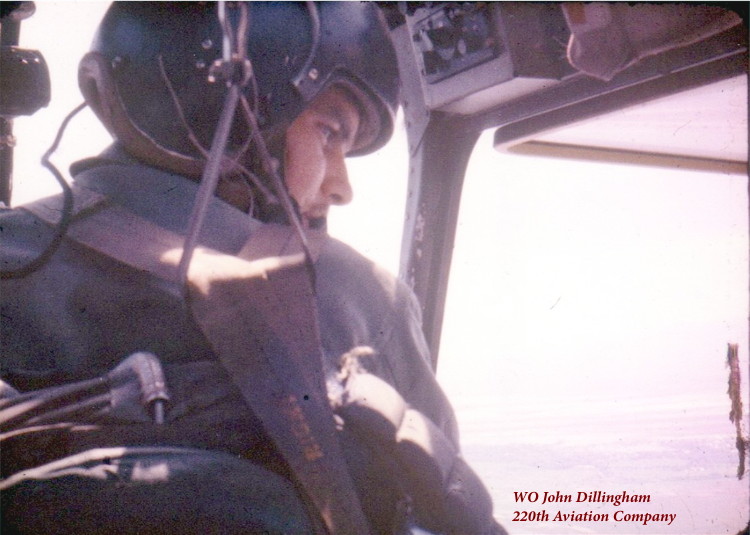
Postscript:
While the I Corps Aviation Battalion was apparently formed in June 1966, the 220th remained subordinate to the 14th until the 223rd was formed in September 1966. When I (Gene) arrived in June 1966, we still reported directly to the 14th which was then located in the Phu Tai Valley to the west of Qui Nhon. As a side story—flying one of our own Birddogs for a meeting or otherwise visiting the 14th required a PPR (Prior Permission Request) via land line telephone to use the ROK (Republic of Korea) PSP (Pierced Steel Planking) [we need a few more acronyms] fixed wing strip for the Birddogs of the two Korean Divisions that were being supported by the 14th out of Lane Army Heliport. Otherwise, we had to land at Qui Nhon and then be trucked via road to the 14th Battalion Headquarters — after one time of that—No, thank you!
When we were transferred to the 223rd Aviation Battalion (Fixed Wing), which was then headquartered in Nha Trang, we were even further from the “flag pole”. The remaining fixed wing assets of the I Corps Aviation Battalion were then all supposedly transferred to the 223rd Aviation Battalion by December 1966.




